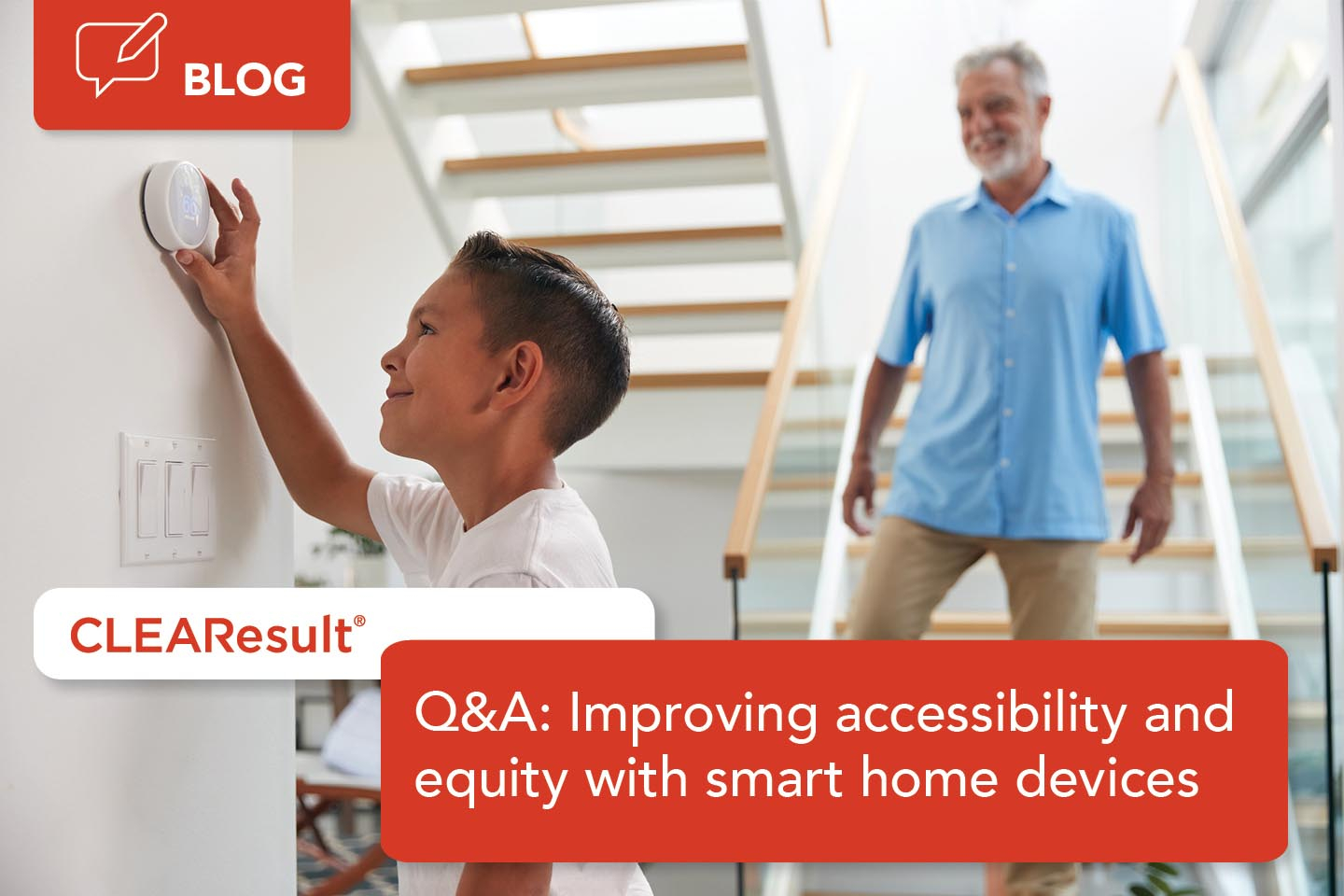Improve accessibility and equity with smart devices: Q&A with Emily Kemper

Smart home devices like smart thermostats, smart plugs and many more have grown in popularity and affordability over the past decade. It is expected that by 2025, such devices will be in approximately 60% of homes. These devices have already made their way into some utility energy programs but there is an opportunity to expand the smart home market into underserved populations who can benefit most from these devices.
We talked to Senior Practice Consulting Director Emily Kemper about how adding smart devices to utility programs could help improve program equity and home accessibility.
What is the state of smart home devices in energy programs?
Right now, this really depends on the device. The smart home devices offering the most potential to save energy and reduce peak demand are smart thermostats and, fortunately for everyone, these are widely available in energy programs across the country. Unfortunately, however, our energy programs have struggled to find room for other smart home devices, like smart plugs, smart bulbs and smart appliances, either because the savings are too difficult to discern or due to other issues, such as usability concerns and technology interoperability.
What kind of benefits can these devices bring to customers?
Many smart home devices give customers the ability to save energy incrementally either with advanced remote controls, available via smartphone apps, or with built-in energy monitoring that customers can observe and then take action on. However, the benefits I’m most excited about are the ones that can meaningfully improve people’s lives and health.
For example, we’ve supported small pilots in which we saw people with disabilities using some smart devices or apps to control appliances, such as grid-enabled ovens, remotely. We’ve also received feedback that some of those customers appreciate how smart speakers offer them the ability to call for help, even if they never have to use this functionality. Such features are conveniences for many people, but if you are experiencing a disability, they can be a safety upgrade, too.
Furthermore, we’ve seen smart thermostats and other devices on the market focus more on indoor air quality monitoring, which is an issue that has become especially relevant in recent years as the outdoor air quality has suffered across much of North America due to wildfires. These “non-energy” benefits are, I think, the reason that smart devices have such potential in our programs.
What type of customers could be helped most from those non-energy benefits?
Many people with disabilities, whether they have limited mobility or are deaf or blind, can benefit from the remote-control capabilities offered by smart devices, enabling them to turn devices such as smart lamps or small appliances on, off, up or down. Smart devices can also offer additional benefits that enhance accessibility, such as voice control, voice alerts or visual alerts for those who are hard of hearing. Smart devices with air quality monitoring or smart air purification devices can help customers who live in areas affected by bad outdoor air due to wildfires or other calamities, but these features can also be a daily matter of health and safety for folks who have respiratory conditions, such as moderate to severe asthma.
What should utilities be looking for when designing a program or pilot that includes smart devices?
Utilities should consider how to better incorporate non-energy benefits, such as air quality improvements, safety or even comfort, into cost-effectiveness testing or other program valuation calculations, in order to better take advantage of the features that customers want in smart devices. Additional benefits, such as peak load reduction, exist within ecosystems of smart devices that can offer both energy and non-energy benefits, but traditional program incentives and mechanisms are not well-equipped to handle more complexity in both incentivizing benefits and in direct installation. We also think that a lot of potential exists in ecosystems of smart devices, and we recommend direct installation for this very reason, so that our technicians can answer customers’ questions and help them take advantage of all the features that these products offer.
Any last thoughts?
As much as we are ready to leverage all the benefits that smart home devices bring in existing energy efficiency programs, we are also ready to tackle the next generation of programs that deliver more than just energy savings to customers – for example, how to achieve more peak load shifting. Smart home devices can help us move those programs forward, with their inherent control functionality and ability to change customer behavior. As an industry, we should also be considering how to layer interventions and incentives in programs in order to increase equity, provide climate resilience, and enhance end-user safety and comfort. I’m proud to say that CLEAResult is already investigating how to do that in the most sensible and cost-effective way possible, and smart home devices are a central piece of this much larger puzzle.
_____________
Emily Kemper is an Oregon-state registered architect and building science expert who manages the design and development of new solutions and capabilities at CLEAResult. With 23 years of experience in the building and energy efficiency industries, she leads the team that develops new approaches to changing the way we use energy throughout all of CLEAResult's markets. She is an active member of the residential building industry through her work on state and city zoning and code boards, including serving as the Public Member on the Oregon State Residential and Manufactured Structures Board, which advises the Building Codes Division on new residential code adoption, since 2011. She is also a member of the American Institute of Architects.